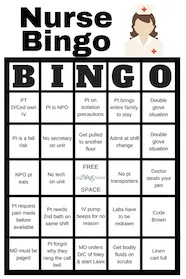Have you ever been to the doctor and they’ve written down a bunch of medical abbreviations that you don’t understand? Well, you’re not alone. Many of these abbreviations can be confusing and difficult to keep track of what all of these letters mean. You may have heard or seen the medical abbreviation “TID” and wondered what it meant. In this blog post, we’ll look at the meaning of “TID.”
TID: What Does it Mean?
The Tid medical abbreviation stands for three times a day. It’s a dosing instruction that you’ll see on many prescriptions. For example, if your doctor prescribes you a medication that you need to take “Tid,” you should take it three times a day. In Latin it is ter in die, or three times a day.
The abbreviation t.i.d. is sometimes written without a period either in lower-case letters as “tid” or in capital letters as “TID”. No matter how it is written, it is one of a number of abbreviations of Latin terms that have been used in prescriptions to specify the frequency with which medicines should be taken.
It’s important to note that the intervals between each dose should be spaced out evenly.
For example, if you are supposed to take the medication at 8 AM, noon, and 4 PM, you shouldn’t take the next dose at 6 PM. Instead, you would wait until 8 PM to take the next dose. This ensures that the medication stays consistently in your body throughout the day.
Most medications prescribed “Tid” are often taken at breakfast, lunch, and dinner. However, there may be some exceptions.
For instance, if you’re taking an antibiotic that needs to be taken on an empty stomach, you may need to space out your doses more so that you don’t end up with an upset stomach. In this case, your doctor may instruct you to take the medication every eight hours instead of every six.
When to Use TID
TID is typically used on prescriptions to tell patients how frequently they should take their medication. For example, an antibiotic prescription might say “take two pills TID for 10 days.” This means that the patient should take two pills three times a day for 10 days.
It is important to note that TID does not necessarily mean every eight hours. The best way to determine how often you should take your medication is to ask your doctor or pharmacist. They will be able to give you specific instructions based on the medication you are taking.
Common Medications That Use TID Dosing Schedules
Many common medications use TID dosing schedules. Some examples include:
- Ibuprofen (Advil, Motrin)
- Acetaminophen (Tylenol)
- Certain antibiotics
- Some blood pressure medications
- Some diabetes medications
Ask your doctor or pharmacist if you have any questions about your medication. They can help you understand the directions and take your medication correctly.
Other Nursing Abbreviations Similar To T.I.D
Now there are a lot of medical terms that get thrown around, and it can be difficult to keep track of them. If you’re having trouble keeping everything straight, don’t worry, you’re not alone. Here are some other nursing abbreviations that are similar to TID that you might see:
- QID (four times a day)
- BID (twice a day)
- QHS (before bedtime)
- Q4H (every four hours)
Tid is just one of many medical abbreviations that you may come across. Don’t hesitate to ask your doctor or pharmacist if you’re unsure what a particular abbreviation means. They’ll be more than happy to help you out.
How You’ll See TID Prescriptions Written?
Most doctors and healthcare practitioners have started using electronic health records or EHRs. Many EHR systems have drop-down menus to standardize dosing frequencies with preset options like QID, BID, TID, QHS, etc. Here’s an example of how TID would be written in an EHR system:
- Motrin 800mg PO (TID)
- Clindamycin 300mg PO (TID)
- Vistaril 25mg PO (TID)
Now without looking anything up, even if you don’t know what the medication is, you know how often you should take it! As you can see, the TID abbreviation is pretty straightforward. It simply means that you should take the medication three times a day.
Conclusion:
The next time you see “TID” on a prescription, you’ll know that it means you must take the medication thrice daily. Most often, this will be at breakfast, lunch, and dinner. However, there may be some exceptions depending on the medication you’re taking and your individual situation.
Do you struggle with Lab Values?

Check Out:
- What does PRN Stand for and When Should it Be Used?
- What Does Bid Mean in Nursing?
- The Best Medication Cards For Nursing Students
- What Does the NPO Medical Abbreviation Mean?
Download Nurse Bingo Today!

Liven up any shift with a fun game of bingo. See who can fill a row first!
Fill a whole card and lose grip with reality.
Your privacy is protected. We will never spam you.





